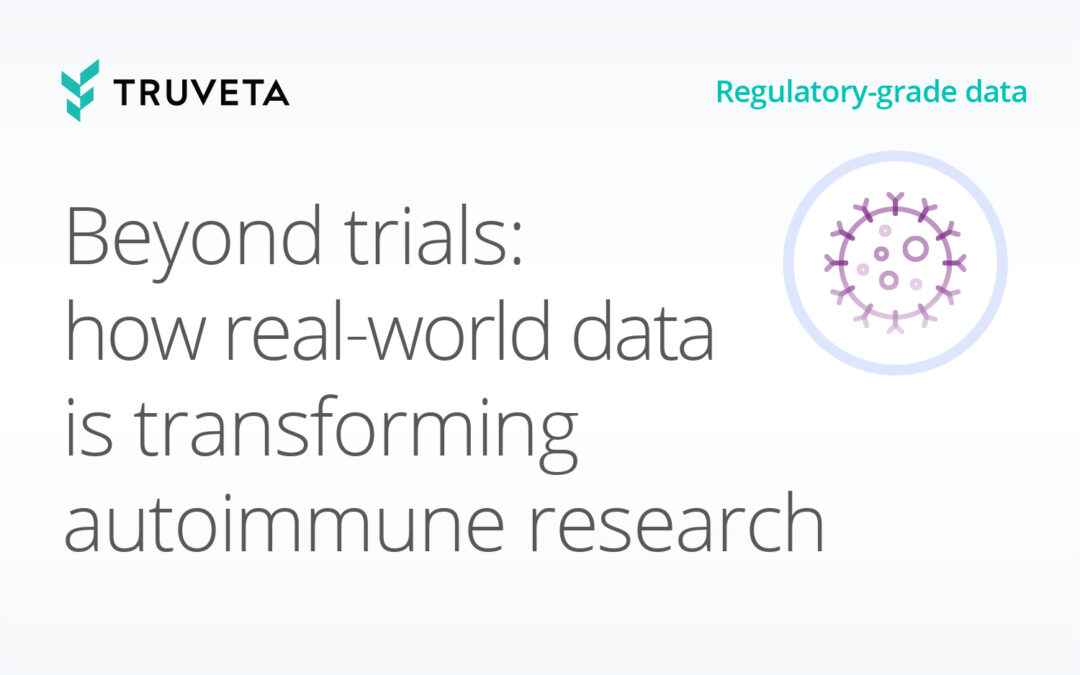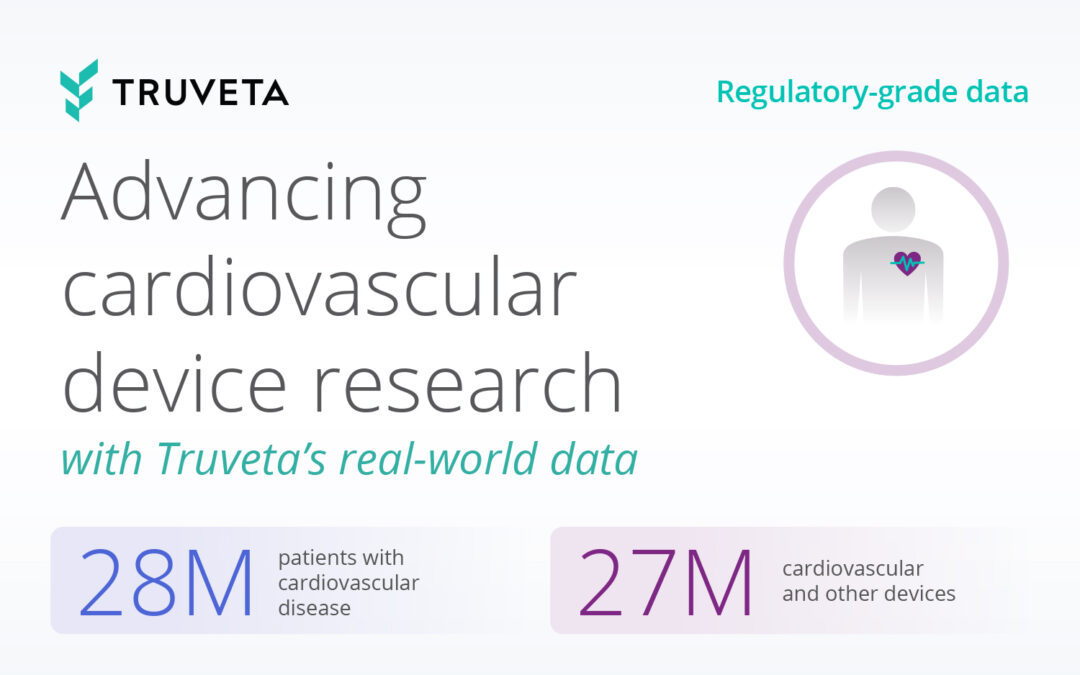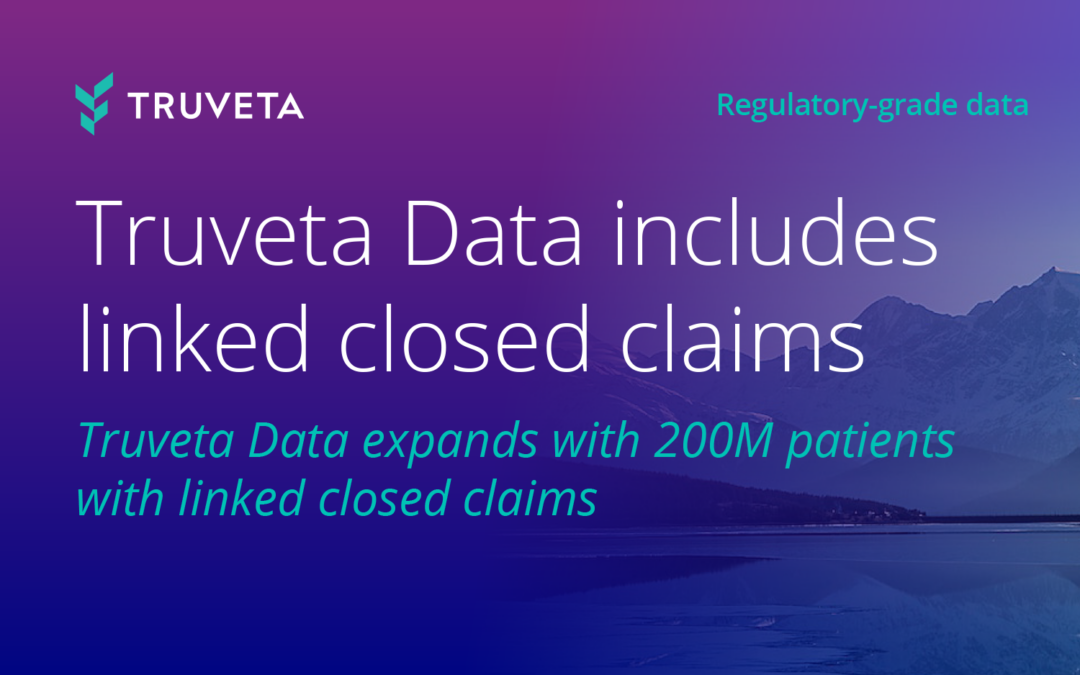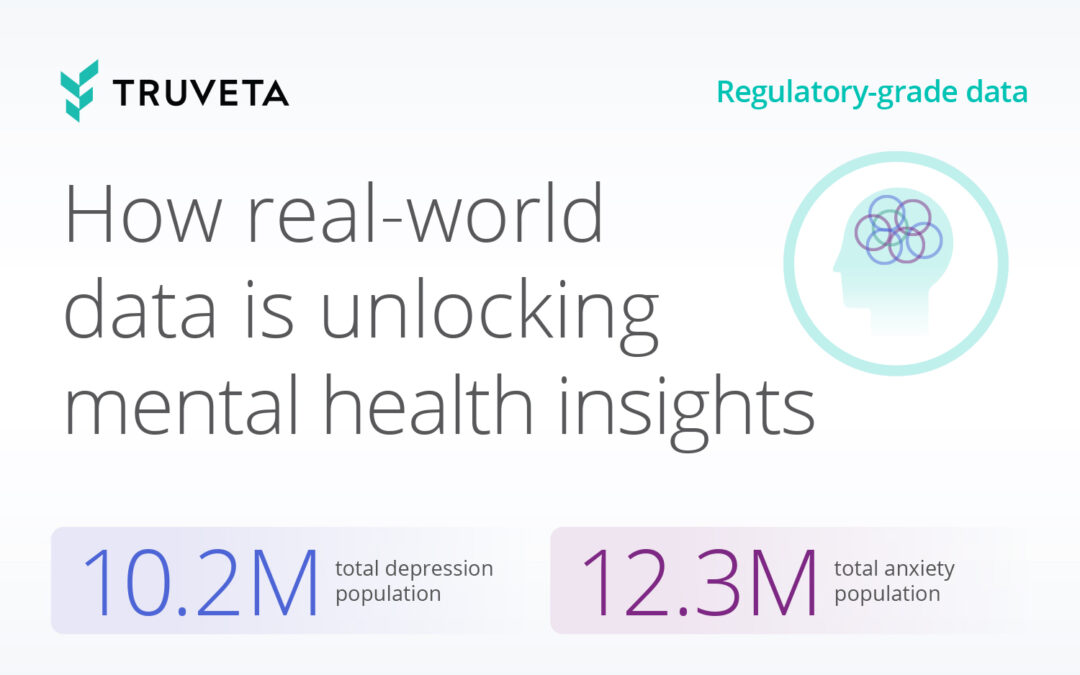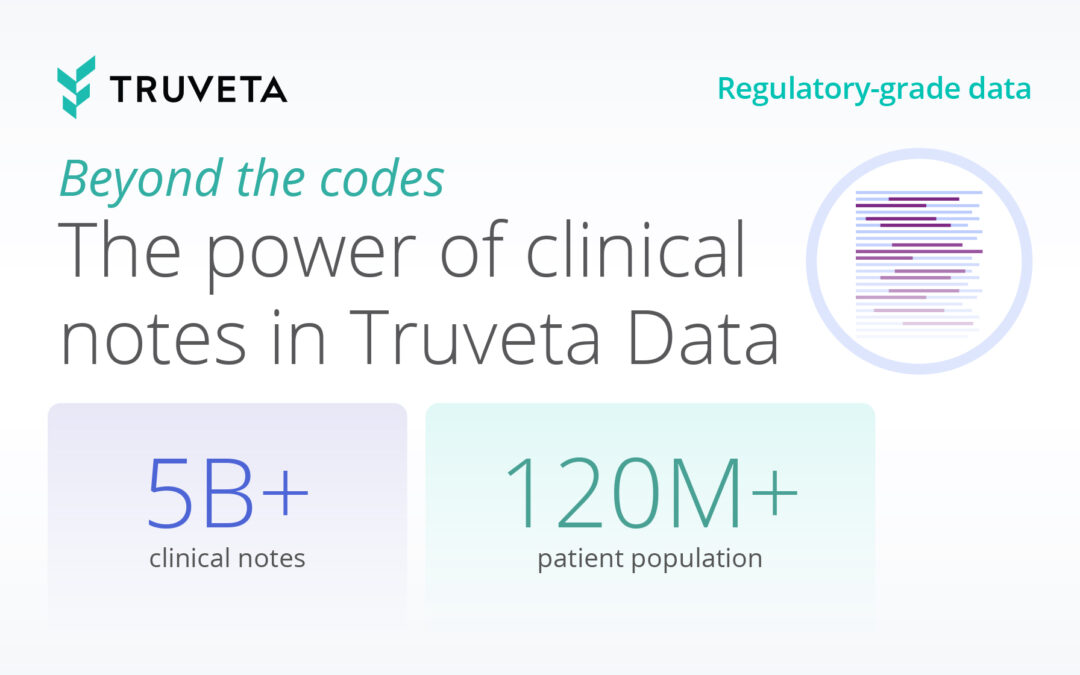Asthma is one of the most studied chronic diseases in medicine, yet decades into the biologics era, researchers face familiar frustrations. Limited phenotyping, unpredictable treatment responses, persistent health disparities, and slow insight cycles can’t meet today’s clinical and commercial demands.
That’s where real-world data (RWD) can help accelerate asthma therapy development and adoption. Truveta Data is the most representative, complete, and timely patient journey data, with EHR data from more than 120 million patients—including clinical notes and images—linked with closed claims for more than 200 million patients. Truveta’s regulatory grade data offers the scale, depth, and speed needed to uncover hidden patterns in asthma care, speed up research, and improve outcomes in the real world.
Here are five key opportunities where Truveta Data can reshape what’s possible in asthma research.
1. Accelerating access and adoption of asthma biologics
Biologics have transformed care for patients with asthma, especially those with severe allergic asthma and eosinophilic asthma. But predicting who will respond—and understanding how these therapies perform outside of tightly controlled trials—remains a challenge.
With Truveta, life sciences teams can:
- Identify asthma phenotypes and subgroups across more than 7.4 million asthma patients
- Monitor real-world uptake and response to anti-IL-5, anti-IL-4R, anti-IL-13, and anti-IgE biologics with daily updated EHR data, including all medication details and lab values
- Detect switching patterns, adherence challenges, and gaps in follow-up care
With daily updated data, life sciences companies can achieve faster feedback loops and better evidence for addressing care gaps, therapy adoption, and label expansion—without waiting years for a registry or trial to deliver results.
2. Going inside the hospital stay
Hospitalizations are a critical inflection point in asthma care, most often triggered by poor control or poor adherence. But current research rarely captures what happens inside the hospital: how long patients stay, what treatments they receive, whether they end up in the ICU, and what meds they leave with.
As a collective of 30 US health systems, Truveta captures complete EHR data from 900 hospitals and 20,000 clinics, enabling unprecedented insight into:
- Length of stay and emergency department (ED) or ICU utilization
- Inpatient steroid use and bronchodilator response to better understand treatment efficacy, optimal dosing, and long-term outcomes
- Comorbidities that complicate recovery
- Discharge medications and follow-up outcomes
These insights can improve trial endpoint design, highlight care gaps, and inform protocols that reduce readmissions and costs.
3. Getting serious about asthma disparities
The burden of asthma is not evenly distributed. Low-income, urban, and minority communities experience disproportionately high rates of asthma, more frequent exacerbations, and worse outcomes. Yet these disparities are rarely addressed in traditional clinical studies.
Truveta Data links EHR data from over 120 million patients with claims and social drivers of health (SDOH), allowing researchers to explore how housing, air quality, income, and education levels intersect with asthma care. For example, Truveta Research found that emergency department visits for asthma increased 1–3 days after spikes in air pollution (AQI), highlighting how real-world environmental factors contribute to acute episodes.
This kind of integrated insight—linking clinical, geographic, and environmental data—enables a new era of precision public health.
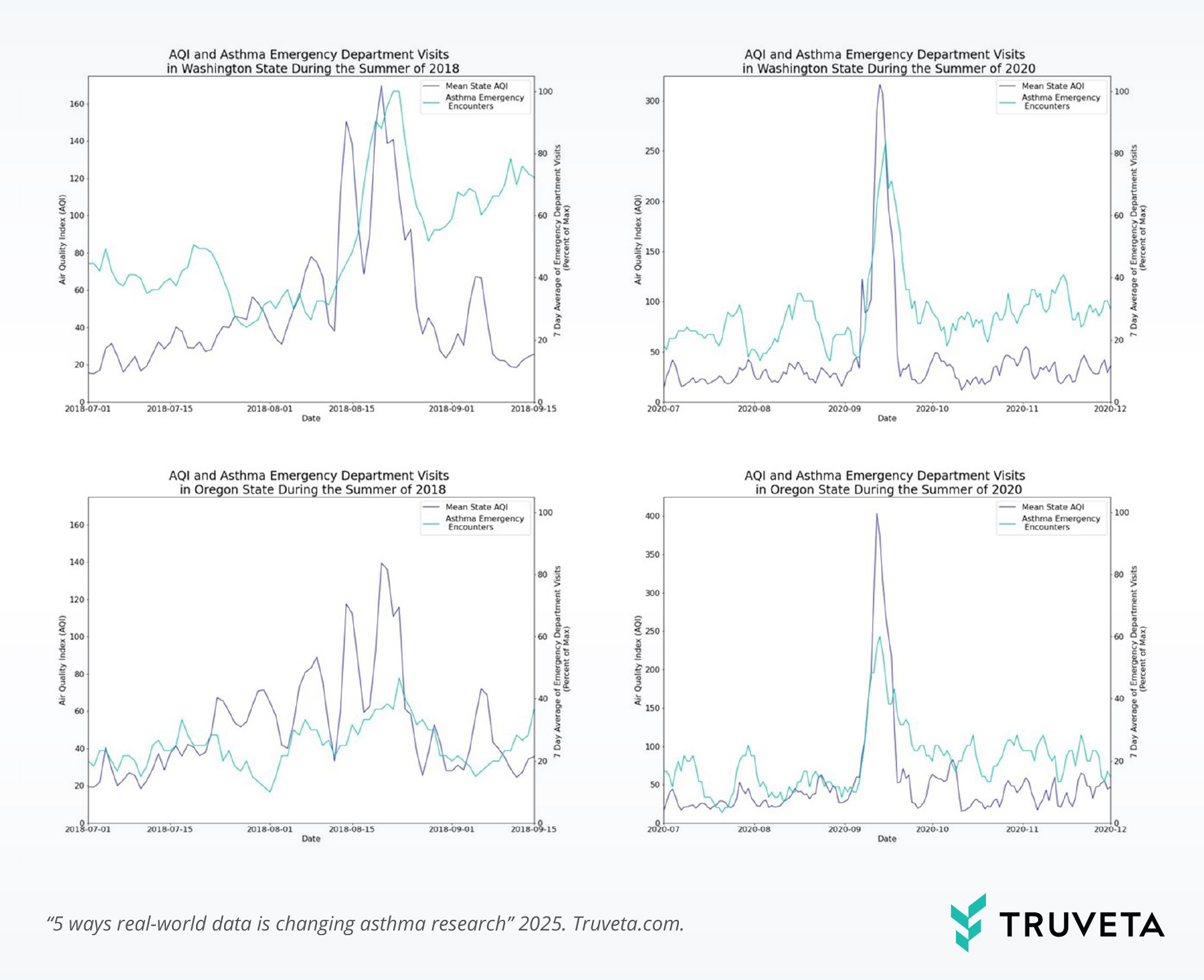
4. Understanding intergenerational patterns with mother–child data
Asthma often runs in families, but most datasets don’t give researchers the detail they need to study patterns across generations. Truveta has the largest and most complete mother-child EHR dataset available, with over 1 million linked pairs. With longitudinal data on mothers and their children from pregnancy through the first 5 years of the child’s life, researchers can explore:
- Hereditary risk factors for childhood asthma
- How maternal health (e.g., gestational diabetes, smoking, infections) impacts asthma development
- Opportunities for early intervention based on parental history
5. Going beyond structured data with clinical notes and images
Asthma is a complex and heterogeneous condition, and structured EHR data alone cannot capture what clinicians observe in the real world. With Truveta, researchers can access over 7 billion clinical notes and more than 100 million medical images from all care settings, offering unmatched clinical depth.
With the Truveta Language Model, data from these notes are extracted at scale, normalizing billions of data points daily and making them available for research. The Truveta asthma population includes over 1.4 billion notes that can be used to study clinical concepts, including reasons for switching medication, symptoms, triggers, and more.
See below for a real (de-identified) asthma patient note available in Truveta Data:

Medical images, such as chest X-rays or CT scans, also provide valuable context for assessing complications or ruling out comorbid conditions. Together, these data contribute to providing the most complete view of the patient journey.
Preview: Truveta Data for asthma research
Truveta Data includes not only diagnoses and procedures, but also lab results, vital signs, medications, imaging, and clinical notes, all while exceeding FDA standards for data quality and audit readiness.
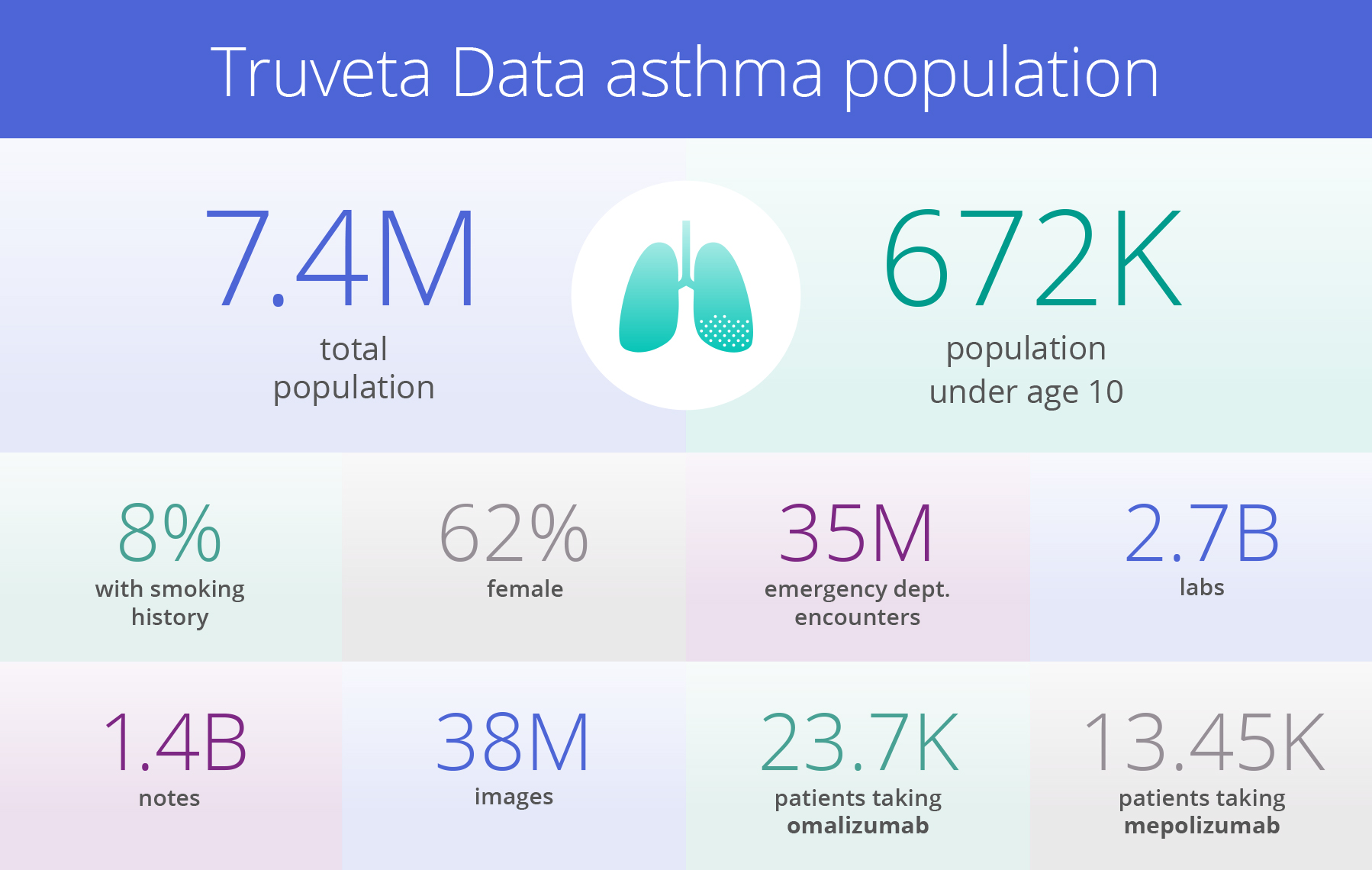
A future of precision medicine in asthma care
Asthma is no longer viewed as a single disease, but a spectrum of conditions with distinct biological drivers and clinical presentations. To truly understand asthma—and to treat it more precisely—we need to go deeper than symptoms and surface-level classifications. This is where genomics comes in. The future of precision medicine relies on our ability to connect the dots between a person’s genes, their biology, and their lived experience. The Truveta Genome Project aims to drive this change by creating the largest and most diverse database of genotypic and phenotypic information ever assembled. Collaborating with Truveta helps ensure your dataset stays at the forefront of innovation, helping to transform how diseases are prevented, diagnosed, and cured.
Reach out for a demo of Truveta Studio and Truveta Data today!

